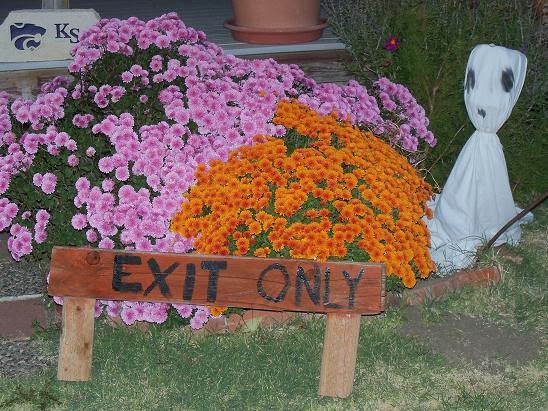I took a drive yesterday up into the sand hills of SW Nebraska as it was necessary to take a trip to North Platte for a few things. I was surprised at the number of trees yet to turn from their summer green and it got me thinking about fall colors and the pictures you get to see on the TV of the New England fall colors with all the brilliant reds and purples, golds and yellows; so picturesque.
Out here on the prairie, you have to look closely to see more than the yellow gold that predominately invades the trees along the creeks and the side of the roads. Granted it looks stunning against the dark green of the cedar and evergreen trees we also have growing about the prairie. But where are those other fall colors?
They are lower to the ground. The grasses that grow in the ditches go from green to rust with their taupe frosted tops. The sumac that grows along the creeks and where water tends to pool is a bright red. Every so often you might see the red of a maple tree. Orange is mostly found around mailboxes and along the steps of farm houses where pumpkins are placed to greet friends as they visit.
There is a shade of red seen in the fields as long as the milo has not been cut. Even that seems to be less brilliant this year, probably from lack of moisture which we can continue to blame on the drought. The milo though is a lovely contrast to the brown that it sits atop as the stalks dry and become that taupe color.
At my house there is a lovely lavendar and a burnt orange that greet me when I walk outside, the mums I have planted by the steps of the deck always look completely beautiful this time of year. I guess it is my attempt to bring some of those other colors missing from the trees to the prairie.
But the color you see the most is the golden yellow. So then the challenge is to see shades of gold or yellow, make it more than just one basic color. That is relatively easy to do because each type of tree has its own unique color of gold/yellow. The cottonwood is a bright yellow. The elm tends to be a bit darker like it is trying to turn orange with all its might but just can't muster up enough pigment to pull that color out. There is also the darkest shade of yellow which looks more brown, it is when the leaves dry so quickly that they lose their fall coat and become the color of the ground which is where they are destined to "fall."
We do get a lovely color of purples, pinks and reds each evening as the sun sets but that is only in the sky and only seen at sunset time.
So wherever you are, find your fall colors, look high, look low and appreciate your fall colors in your neck of the woods or prairie.

No comments:
Post a Comment